dark pattern
description: user interface designed for a user to make choices without being aware of them
28 results
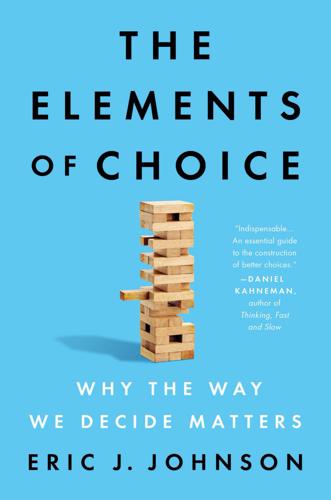
The Elements of Choice: Why the Way We Decide Matters
by
Eric J. Johnson
Published 12 Oct 2021
A different intellectual tradition, user-experience research, gives rise to the term dark patterns. Coined by Harry Brignull in 2010, dark patterns are design elements that make people select options that they did not mean to—for instance, signing up for a spam email list or buying something by accident. It is largely focused on the negative effects of design on the web, but dark patterns can often describe cases where a designer makes it easier to do something that is not in a chooser’s best interest. If it is easy for you to select a free trial of an online product without realizing that this implies a yearlong commitment, you may have fallen prey to a dark pattern. They may have different origins, but sludge and dark patterns are closely related.
…
Adults Completes Any Type of Advance Directive for End-Of-Life Care,” is the source of statistics about the frequency of advance directives. Evidence for the desire for comfort care comes from Fried et al., “Understanding the Treatment Preferences of Seriously Ill Patients.” 13. Mathur et al., “Dark Patterns at Scale: Findings from a Crawl of 11K Shopping Websites”; Valentino-DeVries, “How E-Commerce Sites Manipulate You into Buying Things You May Not Want”; Brignull, “Dark Patterns: Inside the Interfaces Designed to Trick You.” 14. Obar and Oeldorf-Hirsch, “The Biggest Lie on the Internet: Ignoring the Privacy Policies and Terms of Service Policies of Social Networking Services.” 15.
…
Brater, Jonathan. “Automatic Voter Registration in Oregon a Huge Success.” Brennan Center for Justice, April 8, 2016. https://www.brennancenter.org/our-work/analysis-opinion/automatic-voter-registration-oregon-huge-success. Brignull, Harry. “Dark Patterns: Inside the Interfaces Designed to Trick You.” Verge, August 29, 2013. https://www.theverge.com/2013/8/29/4640308/dark-patterns-inside-the-interfaces-designed-to-trick-you. Bronshtein, Gila, Jason Scott, John B. Shoven, and Sita N. Slavov. “Leaving Big Money on the Table: Arbitrage Opportunities in Delaying Social Security.” Quarterly Review of Economics and Finance 78 (March 25, 2020): 261–72. doi:https://doi.org/10.1016/j.qref.2020.03.006.
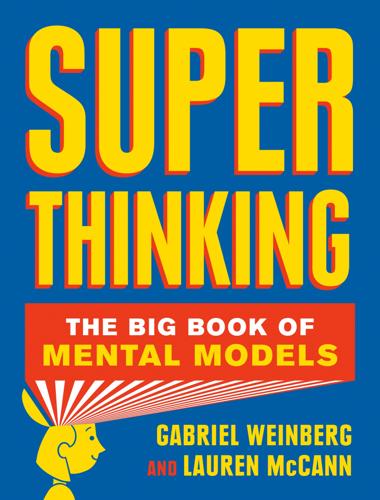
Super Thinking: The Big Book of Mental Models
by
Gabriel Weinberg
and
Lauren McCann
Published 17 Jun 2019
Influence models like those we’ve been discussing in the past two sections can also be dark patterns when they are used to manipulate you for someone else’s benefit (like at the casino). The name comes from websites that organize their sites to keep you in the dark through using disguised ads, burying information on hidden costs, or making it really difficult to cancel a subscription or reach support. In short, they use these types of patterns to manipulate and confuse you. However, this concept is also applicable to everyday life offline as well. And knowing a few specific dark patterns can be helpful in adversarial situations. You’re probably familiar with the mythical tale of the Trojan horse, a large wooden horse made by the Greeks to win a war against the Trojans.
…
In any conflict situation, you should be on the lookout for dark patterns. While many influence models, such as the ones in this section, are commonly thought of as malicious and are therefore easier to look out for (e.g., bait and switch), others from the previous two sections are subtler. Many are considered more innocuous (e.g., scarcity), but they too can all be used to manipulate you. For example, are the common nonprofit uses of reciprocity techniques (free address labels) or social proof (celebrity endorsements) also dark patterns? In one sense, they might lead you to donate more than you would otherwise.
…
Builders similarly attract buyers to new-construction homes with low list prices that correspond to so-called “builder-grade” finishes that no one really wants. They then proceed to show buyers a model home with more expensive finishes—all upgrades—which in aggregate can easily push the bounds of a buyer’s budget. If it sounds too good to be true, it usually is. Spectacular examples of dark patterns can be found in business. Enron, a now bankrupt energy company, once built a fake trading floor at its Houston headquarters to trick Wall Street analysts into believing that Enron was trading much more than it actually was. When the analysts came to Houston for Enron’s annual meeting, the Enron executives pretended that there was all this action going on, when in fact it was all a ruse that they had been rehearsing, including having an elaborate array of TVs and computers assembled into a “war room.”

A Hacker's Mind: How the Powerful Bend Society's Rules, and How to Bend Them Back
by
Bruce Schneier
Published 7 Feb 2023
But they’re close enough for most purposes. And the norms are taken from the real world as much as possible. “Dark patterns” is a term given to subversive user-design tricks that co-opt common designs to nudge users towards certain ends. Normally, standardized design guides us through our interactions online; it’s a visual language that we trust. In habitual behaviors like driving, for example, green means go, and red means stop. Those same colors are similarly used as guides in user experience design all the time. They become a dark pattern when a series of green “continue” buttons is suddenly subverted to sell an in-app purchase, as in the mobile game “Two Dots.”
…
A banner ad from a company called Chatmost has what looks like a speck of dust on a touchscreen, tricking users into clicking on the ad as they try to swipe away the dirty spot. In 2019, US senators Mark Warner and Deb Fischer introduced legislation banning dark patterns. It didn’t pass. But if a future version does, the sponsors had better get their definition right, because that definition itself will be subject to all sorts of hacks, as programmers and apps that use dark patterns to hack us try to get around the rules. 46 Trust and Authority On March 19, 2016, John Podesta, then chair of Senator Hillary Clinton’s presidential campaign, received an email purporting to come from Google.
…
For example, consider the various webpage interface design tricks that the Trump campaign used to trick people into donating far more money than they had intended, and for purposes other than political campaigning: pre-checked boxes authorizing recurring weekly withdrawals from a donor’s checking or credit card account, donation amounts hidden in small print, more small print stating that the donation could be used for the candidate’s personal expenses, and the like. These are clearly hacks: they’re examples of a “dark pattern” that we’ll talk about later. But are they hacks of our perceptual, emotional, or executive decision-making systems? The answer is, kind of all three. I’m okay with this ambiguity. Humans are complicated. Cognitive systems are messy. Any discussion of them will be messy as well. 44 Attention and Addiction Everyone hates pop-up ads.

Vassal State
by
Angus Hanton
Published 25 Mar 2024
, published by the think tank the Centre for the Study of Financial Innovation (CSFI) in 2010. 19 Antoine Gara and Ortenca Aliaj, ‘FIS sells majority stake in Worldpay to buyout group at $18.5bn valuation’, Financial Times (6 July 2023), https://www.ft.com/content/b133fa58-5ef2-4cc4-972b-8271f749779e. 20 Quoted in Wiggins and Borrelli, ‘How the private equity industry stole a march in European payments’. 21 ‘Alfred Kelly Jr net worth & insider trades’, Benzinga [website] (4 December 2023), https://www.benzinga.com/sec/insider-trades/v/ALFRED-KELLY%20JR; ‘Ajay Banga – net worth and insider trading’, GuruFocus [website], https://www.gurufocus.com/insider/3836/ajay-banga. 22 Charlotte Tobitt and Aisha Majid, ‘National press ABCs: FT stays steady while Evening Standard falls below 300,000 for first time since going free’, Press Gazette (15 November 2023), https://pressgazette.co.uk/media-audience-and-business-data/media_metrics/most-popular-newspapers-uk-abc-monthly-circulation-figures-2/. 23 ‘UK ad spend grew 8.8% in 2022 to reach £34.8bn’, Advertising Association [website] (27 April 2023), https://adassoc.org.uk/our-work/uk-ad-spend-grew-8-8-in-2022-to-reach-34-8bn-inflationary-pressures-persist-with-minimal-growth-forecast-for-2023/. 24 ‘Nobody reads terms and conditions: it’s official’, Pinsent Masons [website] (19 April 2010), https://www.pinsentmasons.com/out-law/news/nobody-reads-terms-and-conditions-its-official. 25 ‘It pays to read license agreements (7 years later)’, PC Matic [website] (12 June 2012), https://www.pcmatic.com/blog/it-pays-to-read-license-agreements-7-years-later/. 26 Gina Hall, ‘San Jose area has world’s third-highest GDP per capita, Brookings says’, The Business Journals [website] (23 January 2015), https://www.bizjournals.com/sanjose/news/2015/01/23/san-jose-has-worlds-third-highest-gdp-per-capita.html. 27 ‘Investing in American dynamism (with Katherine Boyle)’ [transcript of podcast interview with embedded video], Acquired [website] (5 June 2022), https://www.acquired.fm/episodes/american-dynamism-with-katherine-boyle. 28 David Curry, ‘Etsy revenue and usage statistics (2023)’, Business of Apps [website] (8 November 2023), https://www.businessofapps.com/data/etsy-statistics/. 29 Krystal Hu, ‘ChatGPT sets record for fastest-growing user base – analyst note’, Reuters [website] (2 February 2023), https://www.reuters.com/technology/chatgpt-sets-record-fastest-growing-user-base-analyst-note-2023-02-01/. 30 For ‘privacy zuckering’, ‘roach motel’ and ‘confirmshaming’, see ‘Dark pattern’, Wikipedia [website], https://en.wikipedia.org/wiki/Dark_pattern. For WinRed, see ‘How Trump steered supporters into unwitting donations’, New York Times (7 August 2021), https://www.nytimes.com/2021/04/03/us/politics/trump-donations.html. 31 ‘The ultimate guide to Airbnb service fees (3%, 14%, 15%, 17%)’, Uplisting [website], https://www.uplisting.io/blog/guide-to-airbnb-service-fees. 32 Alex Baggott, ‘Every Apple App Store fee, explained: how much, for what, and when’, AppleInsider [website] (8 January 2023), https://appleinsider.com/articles/23/01/08/the-cost-of-doing-business-apples-app-store-fees-explained. 33 Simon Sinek, ‘How great leaders inspire action’ [video], TED [website] (September 2009), https://www.ted.com/talks/simon_sinek_how_great_leaders_inspire_action?
…
This is a single subscription which includes free delivery, access to streamed videos, special offers, a music collection, a library and much more.20 While the UK’s Competition and Markets Authority (CMA) recognises the anti-competitive effects of bundling in financial services, they have not dared to challenge US bundlers such as Amazon or Microsoft.21 A unique position in the market has advantages, allowing Amazon to push up the price of Prime by 75 per cent since its introduction, and Prime subscriptions alone garner $25 billion each year from across the world. The US Federal Trade Commission (FTC) has said that some of the methods the company has used to create this deluge of cash have been ‘manipulative’ and ‘coercive’. The US regulator accused Amazon of using deceptive user-interface designs, known as ‘dark patterns’, to trick consumers into automatic renewal of their subscriptions.22 According to a complaint filed by the FTC in 2023, Prime consumers have had to ‘navigate a four-page, six-click, 15-option cancellation process’.23 This contrasts with the signing-up process which only needs one or two clicks.

Moon Rush: The New Space Race
by
Leonard David
Published 6 May 2019
Most lunar swirls share their locations with powerful, localized magnetic fields, so they appear to be related to magnetism, but the cause of those magnetic fields and the swirls themselves is still in question. Observations of these strange features from Earth and via Moon orbiters have led to theories about how lunar swirls form. The bright and dark patterns may result when those magnetic fields deflect particles from the solar wind and cause some parts of the lunar surface to weather more slowly. Or, because particles (electrons and ions) in the solar wind are electrically charged, perhaps those particles respond to magnetic fields and land in particular patterns on the Moon, suggesting that the magnetic field shields the surface from weathering.
…
Perhaps these swirls could have formed from plumes of material ejected by comet impacts. Another theory purports that when micrometeorite impacts loft fine lunar dust particles, an existing magnetic field at those locations sorts them according to their susceptibility to magnetism, forming light and dark patterns with different compositions. A joint study on lunar swirls was issued in July 2018, led by researchers at Rutgers University and the University of California, Berkeley, and suggesting that the swirls may have resulted from ancient magnetic lava just below the lunar surface that is tied to long, narrow lava tubes or lava dikes, or vertical sheets of magma in the lunar crust.

Zucked: Waking Up to the Facebook Catastrophe
by
Roger McNamee
Published 1 Jan 2019
Platforms like Facebook would have you believe that the user is always in control, but as I have said before, user control is an illusion. Maintaining that illusion is central to every platform’s success, but with Facebook, it is especially disingenuous. Menu choices limit user actions to things that serve Facebook’s interests. In addition, Facebook’s design teams exploit what are known as “dark patterns” in order to produce desired outcomes. Wikipedia defines a dark pattern as “a user interface that has been carefully crafted to trick users into doing things.” The company tests every pixel to ensure it produces the desired response. Which shade of red best leads people to check their notifications? For how many milliseconds should notifications bubbles appear in the bottom left before fading away, to most effectively keep users on site?
…
Accel Partners, 54, 58 Acxiom, 226 addiction, 100–101, 106–7, 162, 206, 240, 246, 250, 253, 254, 257, 268, 269, 281 advertising, 17, 47, 68–69, 85–86, 105, 120, 125, 257, 283–84 Facebook and, 11–12, 47, 59–61, 63, 68–77, 85, 103, 119, 128–29, 130, 132, 143, 148, 173, 184, 185, 202, 207–9, 211, 217–19, 237–38, 258, 265, 270, 281 Google and, 47, 67–69, 86, 104, 173, 283–86 political, microtargeting in, 237–38 YouTube and, 103, 283–84 Albright, Jonathan, 125 Alcorn, Al, 34 algorithms, 66, 94, 98, 122, 128, 129, 169, 264 extreme views and, 92 of Facebook, 4, 9, 11, 66, 74, 76, 81, 87, 91, 128–29, 143, 166, 232, 235, 243, 270, 274, 277, 281 of Google, 66, 235 of YouTube, 92–93, 139, 274 Allen, Paul, 25 Altair, 34 Altavista, 42 Alter, Adam, 272 Amanpour, Christiane, 147 Amazon, 16, 27, 36, 38, 68, 137, 224, 262, 283 Alexa, 137, 262, 268, 271, 281 Echo, 236 market power of, 46 monopoly power and antitrust issues, 47–48, 136–40, 225–26, 246, 247, 261, 262, 284 Web Services, 40, 41, 137, 138 words associated with, 231 American Academy of Pediatrics, 273 Anderson, Chris, 109 Anderson, Fred, 14 Andreessen, Marc, 27, 36, 37, 43, 58 Android, 138, 204, 271, 282 angel investors, 48 anonymity, 37, 55, 92, 101, 123 antitrust and monopoly issues, 46–48, 136–41, 162, 220, 223, 224, 227, 234, 238, 246, 247, 250, 261–63, 277, 279, 281–83, 285–87 Amazon and, 47–48, 136–40, 225–26, 246, 247, 261, 262, 284 AT&T and, 224–25 Facebook and, 47–48, 100, 136–41, 162, 225–26, 234, 246, 247, 261, 263, 284 Google and, 47–48, 136–40, 162, 225–26, 234, 246, 247, 261–63, 282, 284 Microsoft and, 46–47, 154–55, 286 Apache, 40 Apple, 14, 25, 29–30, 34, 35, 38, 49, 50, 83, 118, 249 iPhone, 38, 84, 100, 105–6, 271 Jones and Infowars and, 228–29 market power of, 46 Onavo and, 140 privacy and, 38, 158, 271 Silver Lake and, 29–30 words associated with, 231 approval, need for, 98 Apture, 107 Arab Spring, 64, 243 ARPANET, 34–35 artificial intelligence (AI), 69, 84–85, 88, 98, 128, 151, 158, 219–20, 223, 236, 252, 260, 261, 263, 264, 267–69, 272 of Facebook, 10, 11, 69, 85, 87, 91, 95, 108, 203, 219–20, 230, 261 of Google, 108, 219–20, 253, 261 Associated Press, 124 AT&T, 224–25 Atari, 34 Atlantic, 195, 231 Attention Merchants, The (Wu), 120 attorneys general, 120, 172, 227 authoritarianism, 278, 279 automobiles, 158, 223 banks, 231–32 Bannon, Steve, 181, 182, 197, 199 Bast, Andy, 109 Belgium, 247 Bell Labs, 225 Berners-Lee, Tim, 36, 161 Bezos, Jeff, 27 Black Lives Matter, 8, 243, 250, 275 Blacktivist, 131 Bloomberg, 50 Blumenthal, Richard, 128 Bodnick, Marc, 14, 18, 59 Bogost, Ian, 195–96 Bolton, Tamiko, 161–62 Bono, 13, 18, 28–29, 30, 59–61, 159 Booker, Cory, 128 Bosworth, Andrew “Boz,” 160, 165 memo of, 204–6 bots, 90, 116, 124, 126, 174, 177, 227 bottomless bowl, 97 Box, 41 brain, 88 brain hacking, 81–82, 118, 141, 148 Brand, Stewart, 177 Brazil, 280 Brexit, 8–9, 96, 180, 196, 198, 244 Breyer, Jim, 58 Bricklin, Dan, 34 Brin, Sergey, 27 bro and hipster cultures, 49–50 Brotopia (Chang), 50 bullying, 87, 101–2, 205, 253, 269, 273, 280, 281 Bushnell, Nolan, 34 Business Insider, 141 BuzzFeed, 204 California, 227–28 environmental regulations in, 201 secession movement, 114, 115 Cambodia, 215, 246 Cambridge Analytica, 78, 180–98, 199, 202–4, 207, 208, 210, 213, 216–18, 251, 259 Cambridge University, 181 Candy Crush, 191, 269 capitalism, 200, 201, 220, 238, 262 Castor, Kathy, 210–11 cell phones, 36, 225 see also smartphones censorship, 252 Center for Humane Technology (CHT), 157, 166–67, 173, 188, 272 Chancellor, Joseph, 181, 186 Chang, Emily, 50 Chaos Monkeys (García Martínez), 71, 72, 73 Chaslot, Guillaume, 92 Chicago School antitrust philosophy, 137–39, 285, 286 children, 214, 240, 253–54 technology and, 106, 156, 166, 237, 255, 268, 269, 272–73, 279–80 China, 162, 205, 215–16 Cisco, 46 CityVille, 191 Clayton Act, 136 Clinton, Bill, 60 Clinton, Chelsea, 167 Clinton, Hillary, 5, 11, 117, 121, 124, 125, 130, 166 Facebook Groups and, 7–8 Clinton Foundation, 130 cloud, 38, 40, 41, 104, 249, 250 Amazon Web Services, 40, 41, 137, 138 CNBC, 118, 161 CNN, 130–31, 147, 161, 193, 229, 231 Coca-Cola, 141 Cohen, Michael, 209–10 Cold War, 32 Columbia University, 54 Common Sense Media, 119, 156–57, 167, 227, 272 Compaq Computer, 27, 35, 152 competition: lack of alteratives to Facebook and Google, 92, 100, 141, 223, 280 see also antitrust and monopoly issues computers, computing, 22, 25, 31–36, 108, 225 in classrooms, 273 cloud, see cloud minicomputers, 33, 46 PCs, 17, 22, 25, 29, 33–36, 40, 42, 45, 46, 273 Congress, 121–33, 135–36, 152, 154, 163, 200, 208, 222, 226, 238 House Energy and Commerce Committee, 209–10, 227 House Intelligence Committee, 123, 127–28, 132, 133, 167, 227 Senate Commerce Committee, 209 Senate Intelligence Committee, 12, 111–12, 127, 132 Senate Judiciary Committee, 128, 131, 132, 136, 209 Zuckerberg’s testimony before, 209–12, 216, 217 Conservative Political Action Conference (CPAC), 174 conspiracy theories, 92–95, 115, 119, 121, 214, 228, 229, 234, 242, 243, 274 Pizzagate, 124–26, 130 Constitution, 12, 259 Fourth Amendment to, 201 content vendors, 283 Conway, Ron, 48 Cooper, Anderson, 81 copyrights, 281 Cosgrave, Paddy, 108–9 Cow Clicker, 195–96 Cox, Chris, 144 Cox, Joseph, 229–30 Cruz, Ted, 185 Currier, James, 47 Cyprus, 125 Czech Republic, 125 Dalai Lama, 31 dark patterns, 96 data and data privacy, 155, 158, 159, 203, 217, 220, 234–36, 238, 253, 258–59, 263–65, 269, 271–72, 277–84 Apple and, 38, 158, 271 Big Data, 158 browsing history, 218–19 Cambridge Analytica and, 78, 180–98, 199, 202–4, 207, 208, 210, 213, 216–18, 251, 259 combined sets of, 68, 285–86 and data as currency, 285 data ownership, 222, 237, 247, 259, 264 data portability, 247 Facebook’s banning of data brokers, 208 Facebook’s continuing threat to, 246 Facebook user data, 4–5, 9, 62, 72, 75–76, 78, 87, 131–32, 141–42, 174, 180–98, 202–4, 210–11, 216–19, 223, 258–59 Facebook user privacy settings, 97 fiduciary rule and, 226–27, 247, 260–61 Global Data Protection Regulation, 221, 222, 224, 259–60 and Internet of Things, 262, 268, 271 and internet as barter transaction, 285 internet privacy bill of rights, 221–24, 226–27 metadata, 68–69, 211, 217–20, 264 passwords and log-ins, 249–50, 271 “price” of data, 285–86 regulations and, 201 and value of data vs. services, 286 Zuckerberg’s attitudes regarding, 4–5, 55–56, 60, 141–42 Data for Democracy, 90, 122, 127 Dead & Company, 74 Defense, U.S.
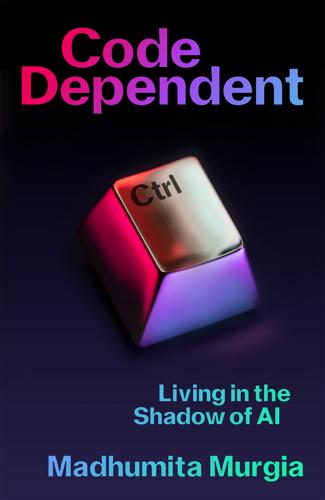
Code Dependent: Living in the Shadow of AI
by
Madhumita Murgia
Published 20 Mar 2024
It helped the public understand how opaque AI-based work platforms really were. ‘At every company I’ve ever worked at, I’ve found a way to make myself heard. It may not be pretty, but I could always try to fix it. With Uber, I feel helpless, because I can’t do that,’ he said. ‘When they have these dark patterns, when they’re underpaying you by like twenty-five cents a ride, there’s nothing I can do to find out why. And there’s no one I can complain to, other than the press, right? UberCheats was a way to take action. Without that, it’s just demoralizing.’ Armin’s story shows what it can feel like to be the human in an automated employment system: the frustration and paranoia, the loss of camaraderie and community, the absence of redress.
…
The game is, they won’t tell you what the rules are, because that would mean we are being managed by the algorithm.’ * My interviews with a dozen or so gig workers across four countries are a drop in the ocean of work being done on algorithms and worker rights. Beneath the scattered individual accounts, I was able to glimpse some dark patterns: first, the co-dependent effects of AI systems in our lives – how we shape algorithms, and how they shape us. Armin, for instance, pointed out that Uber’s work-allocation algorithms incentivized him to take orders from wealthier neighbourhoods and turn down smaller orders, so Armin (and consequently, Uber) could maximize income.
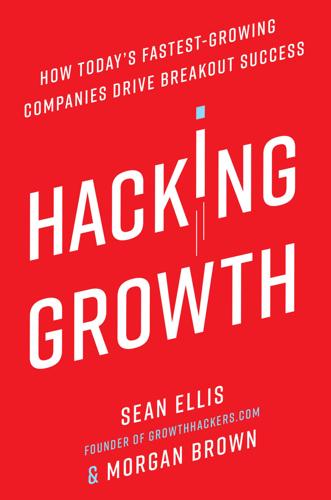
Hacking Growth: How Today's Fastest-Growing Companies Drive Breakout Success
by
Sean Ellis
and
Morgan Brown
Published 24 Apr 2017
But if your payload is low, you’re likely going to need a more compelling incentive, for both parties, to drive up your conversion rate and frequency.18 A common trap companies fall into when trying to optimize a loop is to engineer ways to ratchet up the number of people being sent referrals to the point that users, and those they’ve made referrals to, are annoyed. Anyone who has accidentally sent an invite to download an app to their phone’s entire contact list can appreciate how enraging this can be. User experience experts call tricks to get users to take an action they normally would not take dark patterns, and while some of these dark patterns may work in the short term, the backlash from users is a long-term drag on growth. The negative press and bad feelings these kinds of tricks stir up can even be enough to torpedo the best products—we’ve seen it happen. Here are a number of best practices for experimenting with creating loops that will help you avoid such pitfalls.
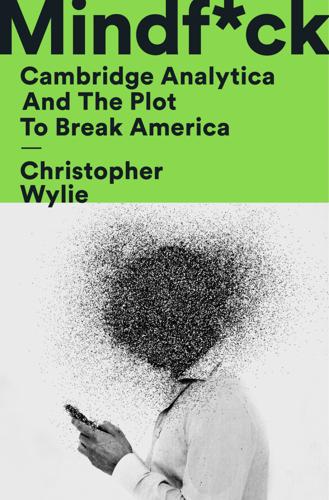
Mindf*ck: Cambridge Analytica and the Plot to Break America
by
Christopher Wylie
Published 8 Oct 2019
The most common job titles in most Silicon Valley companies are engineer and architect, not service manager or client relations. But unlike engineering in other sectors, tech companies do not have to perform safety tests to conform to any building codes before releasing their products. Instead, platforms are allowed to adopt dark pattern designs that deliberately mislead users into continual use and giving up more data. Tech engineers intentionally design confounding mazes on their platforms that keep people moving deeper and deeper into these architectures, without any clear exit. And when people keep clicking their way through their maze, these architects delight in the increase in “engagement.”
…
In following the Canadian and European approach of treating privacy as an engineering and design issue—a framework called “privacy by design”—we should extend this principle to create an entire engineering code: a building code for the Internet. This would include new principles beyond privacy, to include respect for the agency and integrity of end users. Such a code would create a new principle—agency by design—to require that platforms use choice-enhancing design. This principle would also ban dark pattern designs, which are common design patterns that deliberately confuse, deceive, or manipulate users into agreeing to a feature or behaving in a certain way. Agency by design would also require proportionality of effects, wherein the effect of the technology on the user is proportional to the purpose and benefit to the user.

Hooked: How to Build Habit-Forming Products
by
Nir Eyal
Published 26 Dec 2013
For example, it is hard to top PayPal’s viral success of the late 1990s.5 PayPal knew that once account holders started sending other users money online they would realize the tremendous value of the service. The allure that someone just sent you money was a huge incentive to open an account, and PayPal’s growth spread because it was both viral and useful. Unfortunately, some companies utilize viral loops and relationship triggers in unethical ways: by deploying so-called dark patterns. When designers intentionally trick users into inviting friends or blasting a message to their social networks, they may see some initial growth, but it comes at the expense of users’ goodwill and trust. When people discover they’ve been duped, they vent their frustration and stop using the product.
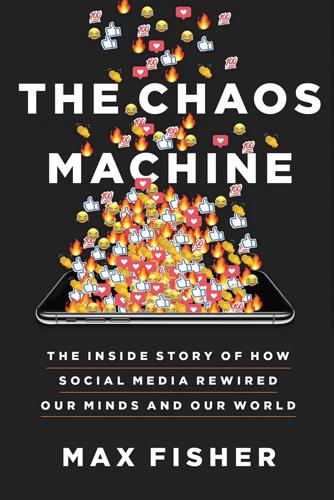
The Chaos Machine: The Inside Story of How Social Media Rewired Our Minds and Our World
by
Max Fisher
Published 5 Sep 2022
But controlling the market of human attention, as their business models had fated them to attempt, was beyond anything a man-made program could accomplish. The companies, to survive this environment of their own creation, would need to entrust their business, and therefore their users, to machines. 4. Dark Patterns IN 2014, WOJCICKI, the Google executive who had guided its acquisition of YouTube, took over the service as CEO. Though her leadership would be just as ruthlessly growth-obsessed as Mark Zuckerberg’s or Jack Dorsey’s, she would only ever attract a fraction of the scrutiny. Even at the height of the backlash against social media, when her service would be credibly accused of harms beyond even Facebook’s, she was rarely hauled before Congress, rarely castigated by cable-news hosts, rarely mentioned at all.
…
Facebook engineers were automatically “paged,” a former news-feed team leader recounted, if likes or shares slid, so that they could tweak the system to boost them again. “If your job is to get that number up, at some point you run out of good, purely positive ways,” a former Facebook operations manager has said. “You start thinking about ‘Well, what are the dark patterns that I can use to get people to log back in?’” The companies learned to downplay the degree to which robots shaped reality for billions of people. But hints of the machines’ power have occasionally slipped through. TikTok, a Chinese-made app, shows each user a stream of videos selected almost entirely by algorithms.
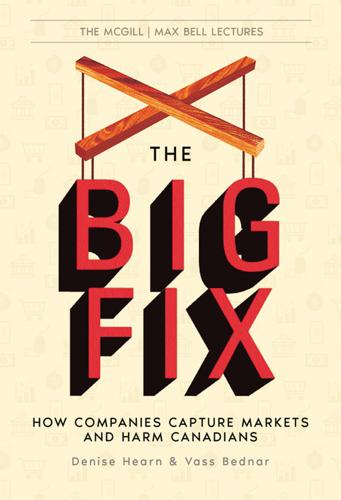
The Big Fix: How Companies Capture Markets and Harm Canadians
by
Denise Hearn
and
Vass Bednar
Published 14 Oct 2024
Ontario’s banning of non-compete clauses in 2021 made it the only province that restricts the inclusion of these clauses in work contracts.288 A Canadian federal ban on non-competes is long overdue, but in the meantime, other provinces could introduce similar measures to free workers from these restrictive clauses.289 Other contract terms such as mandatory arbitration or overly broad non-disclosure or non-disparagement clauses should similarly be investigated. Protecting Consumers In the fall of 2023, Ontario updated its Consumer Protection Act with amendments focussing on prohibiting dark patterns such as subscription traps and auto renewals. A subscription trap is a tactic that involves offering a free or low-cost trial of a product or service, which then turns into a difficult-to-cancel subscription with recurring charges. These scams often use deceptive tactics, such as not clearly disclosing the terms and making cancellation challenging, to lock consumers into ongoing payments.
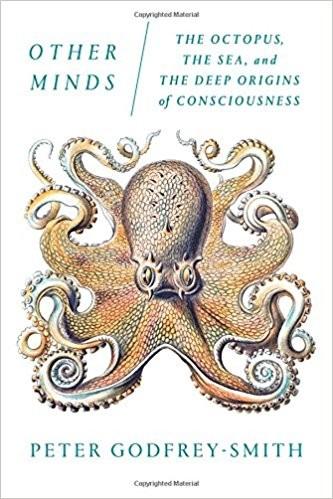
Other Minds: The Octopus, the Sea, and the Deep Origins of Consciousness
by
Peter Godfrey-Smith
Published 6 Dec 2016
Dark colors and the Nosferatu pose, on the other hand, seem to be displays that convey the seriousness of an aggressive move. I commissioned an artist to do a drawing that shows these differences in pattern more clearly. In the next picture, drawn from a video frame, the octopus on the left is bearing down, in a very dark pattern, on the octopus on the right. The one on the right, which is much paler and has just half of its body in the “deimatic” display, is beginning to flee. ~ Origins of Octopolis Matt suspected this was an unusual place when he discovered it, but he did not realize quite how unusual it was. The most similar report was a controversial one from the tropical waters of Panama, nearly thirty years earlier.
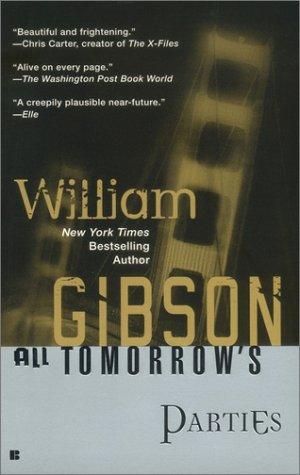
All Tomorrow's Parties
by
William Gibson
Published 2 Jan 1999
"Then he came back here and the Little Big One came. Cracked the bridge. Pretty soon he was out here." "Here," he says, "I'll show you something." Opening a cabinet. 160 Brings out a sheath knife, greenish handles inlaid with copper abstracts. Draws it from the waxed brown saddle leather. Blade of Damascus steel, tracked with dark patterns. The knife of Chevette's memories, its grip scaled with belt-ground segments of phenolic circuit board. "I saw that made," she says, leaning forward. "Forged from a motorcycle drive chain. Vincent 'Black Lightning,' 1952. Rode that in England. It was a good forty years old too, then. Said there wasn't ever a bike to match it.
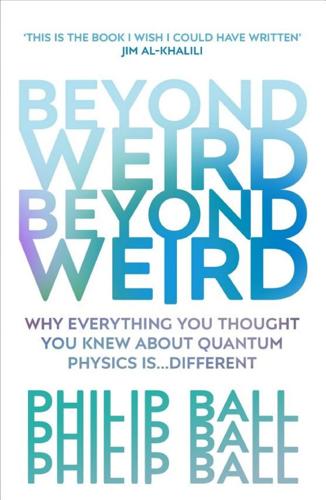
Beyond Weird
by
Philip Ball
Published 22 Mar 2018
We monitor which route the photons take using two sensitive photon detectors DA and DB. They confirm that half of the photons pass along A, and half along B, at random. Now we place another half-silvered mirror (M2) at the crossing point of the two beams. This induces interference between the two beams, creating a light-and-dark pattern of interference fringes – and we lose the ability to say if the photons went along path A or path B. We can arrange for the two detectors, while still positioned in the lines of paths A and B, to be just at the points where the interference pattern has a bright and a dark band respectively. Then when photons pass singly through the apparatus, DA will register the arrival of a photon 100% of the time, while DB will register none.
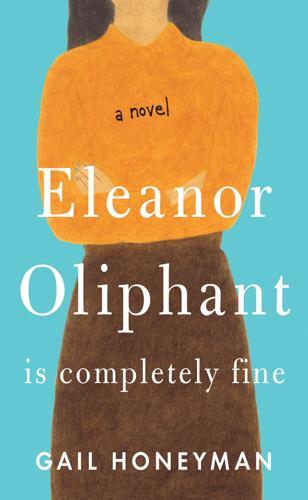
Eleanor Oliphant Is Completely Fine: A Novel
by
Gail Honeyman
Published 8 May 2017
What a rare privilege, to be permitted to eavesdrop on the very moment of creation! He sang of nature, my handsome Orpheus. His voice. His voice! I tipped my head back and closed my eyes. I pictured a sky. It was blue black, soft and dense as fur. Across and over the expanse of night, into the velvet depths of it, light was scattered, enough for a thousand darknesses. Patterns revealed themselves; the eye, exquisitely dazzled, sought out snail-shell whorls and shattered pearls, gods and beasts and planets. As we stood still, yet we rotated, and, whilst turning, moved in a larger circle, round and round the sun, and oh, the dizzying momentum of it . . . The music stopped and there was a sudden, blurry movement.

Recoding America: Why Government Is Failing in the Digital Age and How We Can Do Better
by
Jennifer Pahlka
Published 12 Jun 2023
We should acknowledge that government carries a higher burden than the private sector, without letting that burden add to the risk aversion that makes delivery even harder. Nor should we want government to simply “catch up” with the private sector, especially given some of the impacts that the digital revolution has had on our society. The commercial world has put many of the practices of digital delivery teams to use in the service of “dark patterns”—means to understand and serve users that result in products that deceive and entrap us. In many ways, the digital revolution has fed our worst selves. Government’s move into the digital era can be better. The internet was sold to us as a public good. Indeed, it started out as one, emerging from a project funded by the Department of Defense.

The Power
by
Naomi Alderman
Published 9 Oct 2017
Are we really saying that Alison M-T killed her dad and then jacked a car, crossed state lines, set up as a high priestess of a new religion and was delivering sermons ten days later? I don’t buy it. Coincidence of facial recognition software picked this one up, conspiracy theorists on Reddit went crazy for it, there’s nothing there. Do I believe there’s something weird about Eve? Sure. There are the same dark patterns as Scientology, as early Mormonism. Double-speak, bending old stuff to suit new ways of thinking, creating a new underclass. But murder? There’s no evidence for that. Riseup Wake up. Her people doctored the dates on those sermons to make them seem to go back earlier than they really do. There’s no video of those early sermons, nothing on YouTube.

The Measure of Progress: Counting What Really Matters
by
Diane Coyle
Published 15 Apr 2025
We might question, too, the benefits of some innovations, w hether social media that eats p eople’s attention and spreads misinformation or harmful behaviours, or novel financial instruments that turn out to impoverish customers or increase risk rather than mitigate it. Although free online search and maps are useful, using many everyday services has turned into a nightmare of complicated tariffs, unhelpful chatbots, and higher prices, often deceptively designed into online interfaces using “dark patterns.” The experience of having to spend time in the labyrinth of online chat or voicemail menus trying to sort out a problem that doesn’t seem to fit the automated script, or of puzzling over a comparison website trying to figure out which of 4 I n t r o du c t i on hundreds of different policies or contracts w ill be best, is all too familiar.

User Friendly: How the Hidden Rules of Design Are Changing the Way We Live, Work & Play
by
Cliff Kuang
and
Robert Fabricant
Published 7 Nov 2019
Madrigal, “The Machine Zone: This Is Where You Go When You Just Can’t Stop Looking at Pictures on Facebook,” The Atlantic, July 31, 2013, www.theatlantic.com/technology/archive/2013/07/the-machine-zone-this-is-where-you-go-when-you-just-cant-stop-looking-at-pictures-on-facebook/278185. 17. For a more detailed look at how interfaces use not only variable rewards but also “dark patterns” such as social reciprocity and fear of missing out, see Tristan Harris’s essay “How Technology Is Hijacking Your Mind—from a Magician and Google Design Ethicist” (Medium, May 18, 2016), which kicked off much of the debate in the UX community about tech addiction. 18. Sally Andrews et al., “Beyond Self-Report: Tools to Compare Estimated and Real-World Smartphone Use,” PLoS ONE (October 18, 2015), https://journals.plos.org/plosone/article?
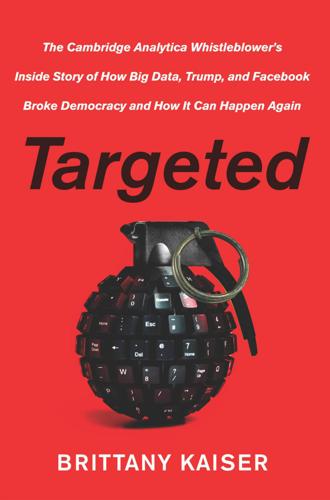
Targeted: The Cambridge Analytica Whistleblower's Inside Story of How Big Data, Trump, and Facebook Broke Democracy and How It Can Happen Again
by
Brittany Kaiser
Published 21 Oct 2019
California governor Gavin Newsom’s Data Dividend Law, which has been introduced and is being debated, recognizes that people from whom personal data has been collected should be compensated for its use. Senator Mark Warner’s DETOUR Act and associated bills that aim to regulate big tech by providing transparency into the value of consumers’ data, and to block manipulative “dark patterns” in the use of algorithms. The state of Wyoming’s Digital Asset Legislation, which includes thirteen new laws already passed, and has many more in consideration during the upcoming legislative cycle. The benefits include definitions of your digital assets as intangible personal property, thereby ascribing rights to, and legal recourse for, their use.
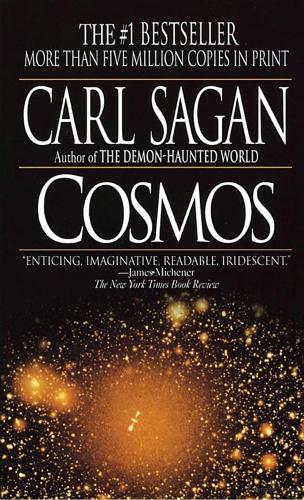
Cosmos
by
Carl Sagan
Published 1 Jan 1980
If we could check that the candidate landing site was not covered with sifting, drifting dust, we would have at least a fair chance of guaranteeing that the winds were not intolerably high. This was one reason that each Viking lander was carried into Mars orbit with its orbiter, and descent delayed until the orbiter surveyed the landing site. We had discovered with Mariner 9 that characteristic changes in the bright and dark patterns on the Martian surface occur during times of high winds. We certainly would not have certified a Viking landing site as safe if orbital photographs had shown such shifting patterns. But our guarantees could not be 100 percent reliable. For example, we could imagine a landing site at which the winds were so strong that all mobile dust had already been blown away.

Startide rising
by
David Brin
Published 1 Mar 1984
“I’m going to ask Creideiki to send me to Hikahi’s island. The abos are important. After escape itself, I’d guess they’re the most important thing:” “A normal, moral view from the Galactic standpoint, and therefore of little interest to me.” The Niss sounded bored already. The dazzling display coalesced into dark patterns of spinning lines. They whirled and converged, fell together into a tiny point, and disappeared. Gillian imagined she heard a faint pop as the Niss departed. When she reached Creideiki on the comm line the captain blinked at her. “Gillian, is your psi working overtime? I was just calling you!..

Where Bigfoot Walks: Crossing the Dark Divide
by
Robert Michael Pyle
Published 31 Jul 2017
By then what he said didn’t seem so bizarre, but one got the impression that he was always ready to see Bigfoot—not an unusual trait among the faithful. For example, he took as “signs” an apple in an orchard with a single tooth impression (a starling?) and a cherry tree completely stripped that had been full a week before (a bunch of starlings?). He spoke of a far-off dark pattern that he admitted “could be shadows” and of stones that he took for knives and scrapers, reminding me of Ray Wallace’s concretions that he took to be missiles for killing deer. “I’ve been hoping I could make a breakthrough and talk at them,” he said. “Maybe build a fire and whittle on something to put them at their ease, and they’d say something . . .

Fear Is Just a Word: A Missing Daughter, a Violent Cartel, and a Mother's Quest for Vengeance
by
Azam Ahmed
Published 26 Sep 2023
* * * — Miriam stared at her phone. More than a week had passed since she had paid the $1,600, not enough time to abandon hope but enough time to begin imploring a mindless cell phone to ring. Azalea’s living room had taken on the look of a temporary staging ground, a one-woman operations center amid the varnished wood and dark patterned fabrics. Empty glasses on the coffee table, papers spread on the sofa, the disorder of a family distracted by worry and fear. Miriam’s phone did ring every so often with calls from unknown numbers, sparking momentary surges of hope dashed nearly as fast as it took to answer. Sometimes they were new ransom demands, an unrelated group that had caught wind of the family’s plight and decided to take advantage of it, but after two weeks, Miriam received a call that seemed to be the actual kidnappers, not the posers who were misery shopping.
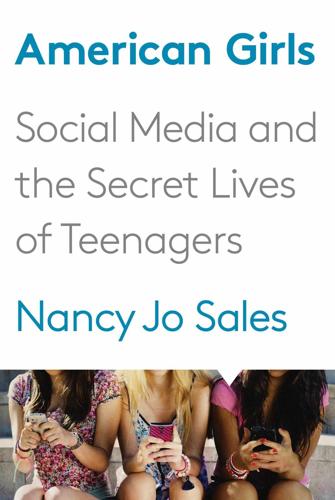
American Girls: Social Media and the Secret Lives of Teenagers
by
Nancy Jo Sales
Published 23 Feb 2016
They want my autograph. They’ll say, ‘There goes Amanda’s dad.’ ” He chuckled. Amanda was waiting for her father to finish talking. She wore a curling smile. She was a slender girl with shiny, shoulder-length dark hair and pale blue eyes. She wore short black shorts, a black crop top, and a dark, patterned kimono, like butterfly wings. Her nails were long and cobalt blue. She had creamy white skin (“Here’s How to Get Flawless Skin Like Amanda Steele,” said a post on MTV.com) and was wearing a lot of makeup. She had none of the bounciness seen in her YouTube videos; she seemed preternaturally poised.

Seven Pillars of Wisdom
by
T. E. Lawrence
Published 29 Mar 2000
Again we felt how Rumm inhibited excitement by its serene beauty. Such whelming greatness dwarfed us, stripped off the cloak of laughter in which we had ridden over the jocund flats. Night came down, and the valley became a mind-landscape. The invisible cliffs boded as presences; imagination tried to piece out the plan of their battlements by tracing the dark pattern they cut in the canopy of stars. The blackness in the depth was very real — it was a night to despair of movement. We felt only our camels’ labour, as hour after hour monotonously and smoothly they shouldered their puny way along the unfenced level, with the wall in front no nearer and the wall behind no further than at first.

Italy
by
Damien Simonis
Published 31 Jul 2010
MIDRANGE Hotel James Joyce ( 040 31 10 23; www.hoteljamesjoyce.com; Via dei Cavazzeni 7; s/d €85/130; ) This place is less about Ulysses and more about sparkling modern rooms, great central location and ultra-smooth service – all in a historic 18th-century old town building, no less. Hotel Milano ( 040 36 96 80; www.hotel-milano.com; Via Carlo Ghega 17; s €95-118, d €130; ) The dark patterned carpets and heavy drapes give the Milano a melancholy Triestine feel, but there’s a lighter mood to be found in the welcoming staff, ample (for Italy) breakfasts, and huge sparkling bathrooms. The Milano is handily located 400m from the train station and within shouting distance of the Zampolli ice-cream store.